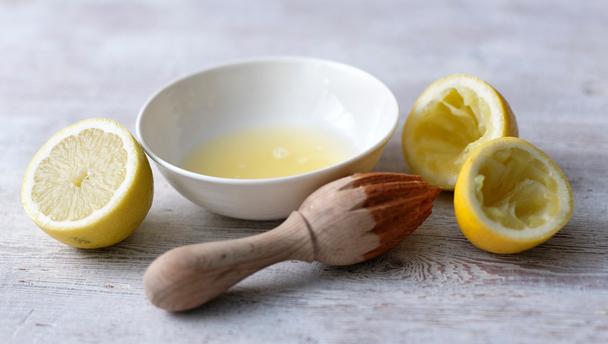Shaving is a part of day-to-day life for many people. Removing unwanted hair from key areas of the body can go a long way towards boosting a person’s appearance. That’s why it plays such a major role in the average person’s grooming routine. However, shaving can also have a negative impact on your looks if it leaves behind razor bumps.
Unfortunately, the appearance of razor bumps (not to be confused with razor burn) on the skin can make a person feel like they are worse off for shaving. That’s because these blemishes often resemble pimples and are thus fairly noticeable. Although razor bumps can appear on any area of the skin where you shave, they are more likely to develop in sensitive areas.
This doesn’t mean you simply have to accept razor bumps as part of life. There are steps you can take to prevent them, as well as steps you can take to get rid of them if they do develop.
That said, before learning about what you can do to address this problem, it helps to learn more about what exactly causes it in the first place. That will help you better understand how to prevent it.
What Are Razor Bumps? What Causes Them?
Many people are so used to the appearance of razor bumps after shaving that they never stop to wonder what actually causes them to develop. They simply assume it’s a natural and unavoidable effect of shaving for some people. However, this isn’t necessarily the case.
Razor bumps look like raised, red dots of skin. They should not be confused with razor burn. This is a similar condition, but it’s not exactly the same thing.
Razor burn looks more like a rash that forms after shaving. It can also be accompanied by additional symptoms, including itchy feelings, burning sensations, and tenderness around the affected area (Source).
Razor bumps are slightly different. They technically occur for several different potential reasons. Sometimes, after a person shaves, the hair actually curls as it grows back. This can cause it to grow into the skin.
In this case, razor bumps are essentially ingrown hairs. This might also happen if dead skin cells have clogged up the hair follicles. This prevents a hair from growing back properly. It will grow in and under the skin instead of out of it.
Unfortunately, razor bumps can develop on any area of the skin where you shave, including your face, neck, and legs.
Additionally, razor bumps have a tendency to develop on areas where skin is sensitive and the hair is relatively coarse. This is why they are also commonly referred to as bikini bumps. Because the hair around a bikini line is usually coarse and the skin is usually sensitive, it’s not at all uncommon to develop razor bumps in this area.
This is something many people are conscious of. They don’t want razor bumps in this area impacting how they look in a bikini (Source).
It’s also worth mentioning that some people may be more likely than others to develop razor bumps. For instance, people with curly hair are typically more prone to razor bumps than people with straighter hair (Source).
Remember, though, this isn’t the type of problem you have to simply accept. There are plenty of ways you can prevent razor bumps. If they do develop, you can still typically get rid of them by trying the remedies you’ll find here. Keep reading and remember the following key tips to limit the impact this problem has on your appearance.
Shave with the Grain
Being conscious of the direction in which you shave can play a big role in preventing razor bumps. If you shave against the grain, which is another way of saying you shave in the opposite direction the hairs are growing in, this can result in a hair that’s too short and has a pointed tip. These types of hairs are more likely to dig back into the skin as they regrow.
Thus, you’re better off shaving with the grain. The next time you shave, pay attention to the direction in which the hairs are growing, and make sure that’s the direction you’re shaving in (Source).
Keep Your Face Clean
Taking a hot shower before shaving and focusing on cleansing your face can also help you avoid razor bumps. That’s because, remember, you’re more likely to develop razor bumps if dead skin cells are clogging up your hair follicles.
Showering and keeping your face clean can help remove dead skin cells before you shave (Source).
Exfoliate
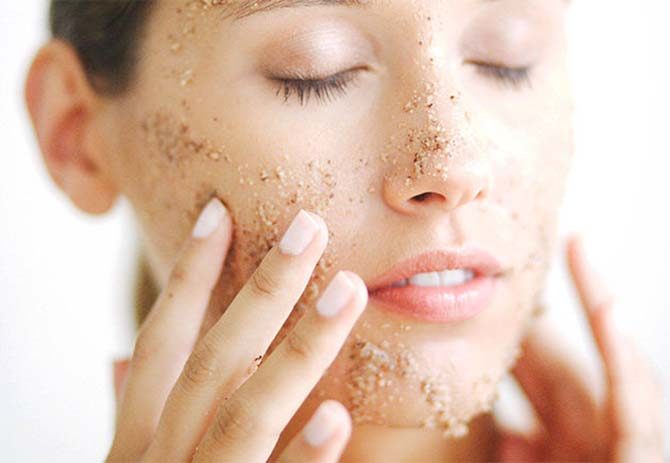
Exfoliating is the process of scrubbing the skin to remove the layer of dead skin cells covering up the healthy skin beneath. Thus, it’s very useful as a means of preventing razor bumps. Dead skin cells can’t clog your follicles if you remove them in the first place.
If you already exfoliate as part of your general skin care routine, continue doing so. If not, consider looking into exfoliating products you can use to keep your skin free of dead skin cells. Exfoliate before shaving for the best results (Source).
Use Shaving Oil
This is an extra step in the shaving process that can be useful if you want to prevent razor bumps. Quite simply, some shaving oils help to raise the hairs up before you shave.
This can make it easier to shave them without leaving them in an awkward position where they’re more likely to grow beneath the skin (Source).
Keep Your Blade Clean
Shaving with a fresh, clean blade is one of the most basic ways to avoid razor bumps. Dull blades can pull the hair back in a way that makes it more likely to grow under the skin when it starts to grow back.
Additionally, an old blade is much more likely to be covered in bacteria, which can also have a negative impact on the appearance of the area in which you are shaving (Source).
Trim First
Shaving properly in certain areas, like your pubic area, is a lot easier if you trim the hair first. Obviously, you’ll want to be very careful when doing this.
That said, using clean scissors designed for trimming hair, you can trim the hair shorter first before going in to shave it. When it’s shorter, it’s easier to shave the hair away without causing it to grow back in an awkward position beneath the skin (Source).
Consider Shaving in a Bath or Shower
If you have the time, shaving while taking a shower or bath may be helpful in preventing razor bumps. That’s because the heat from both the water and the steam helps to open up the hair follicles. This makes it easier to shave in general (Source).
Always Use Shaving Cream
Using shaving cream or gel is important whenever you shave. It’s also important no matter what area of the body you happen to be shaving. If you don’t, it will be much more difficult to properly remove the hairs. They’ll be more likely to grow back in beneath the skin (Source).
Use Hot Water
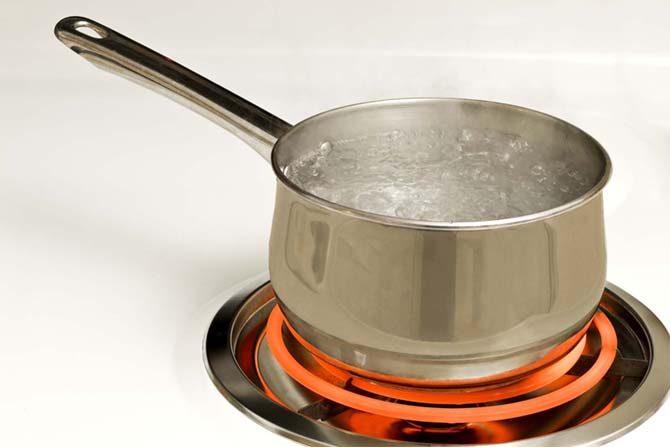
Shaving cream is necessary because it simply makes it easier to properly shave without damaging the hairs in such a way that they’ll grow under the skin when they return. However, shaving cream alone isn’t always enough. You should also apply hot water to the area you’re going to shave before applying shaving cream or gel.
As you read earlier, this is why many recommend shaving in the bath or shower if you have the option. However, if you don’t, you can still get similar effects by applying hot water to your skin before you begin shaving (Source).
Don’t Shave
Don’t worry, this doesn’t mean you shouldn’t shave whatsoever. However, shaving too often, particularly in areas where you have already developed razor bumps, can exacerbate your current razor bumps while also making others more likely to develop in the future.
Granted, you may not have the option to shave certain areas of your body less often than you typically do. For example, if you work in the kind of role that requires you to maintain a professional appearance, you may find that letting your facial hair grow out simply isn’t an option.
However, if you do have the choice to shave an area less often as you let the razor bumps in that area heal, consider doing so (Source).
Hold the Area Tight
Shaving in general becomes much easier when you hold the area you’re shaving taught. This allows you to precisely shave without having to apply too much pressure with the blade.
While this step can make the process take a little longer than you may have intended if you’re shaving a large area of your body, in the long run, it offers benefits that are worth the extra effort (Source).
Stay Safe
In your effort to get rid of razor bumps, it can be tempting to simply pull them out with tweezers or similar equipment. However, this is not a good idea. These tools often contain bacteria. You’ll put yourself at risk of infection if you go this route. Instead, give some of the remedies listed here a try.
It’s also worth mentioning that razor bumps will typically go away on their own over time. Granted, the remedies here can definitely speed up the process, but even if you didn’t take any extra steps on your own, the bumps would fade eventually. Being patient and waiting for them to go away is better than being impatient and developing an infection as a result (Source).
One more point: as you know, exfoliating can help prevent razor bumps. Luckily, it can also help remove existing ones by removing the ingrown hairs that cause them in the first place.
Don’t Wear Tight Clothing
Wearing tight clothing after shaving an area like your legs or bikini line can actually make you more likely to develop razor bumps. This is the same reason why skin can sometimes look pimply if you wear tight clothing for too long.
You need to wear loose clothing so the hair has room to grow back properly. Tight clothing can actually push the hair back under the skin, as well as pushing dead skin cells into the follicles. Wearing loose clothing after you shave will prevent this from happening (Source).
Wear Cotton Underwear
Now you know that wearing tight clothes can exacerbate your razor bumps by trapping bacteria and dead skin cells. However, you should also know that wearing the wrong materials can have the same effect.
That’s why experts recommend wearing cotton underwear. Cotton typically allows your skin to “breathe,” so to speak. Synthetic materials, on the other hand, have a tendency to trap all kinds of unwanted contaminants against your skin. This prevents razor bumps from healing and can also make them more likely to become inflamed (Source).
Don’t Use Too Much Pressure
You want to avoid exerting too much pressure on your skin when shaving. This can cause you to shave in an uneven manner, making some hairs more likely than others to grow back in under the skin.
Focus instead on holding the razor tight and applying an even and steady amount of force as you shave. This is another reason why it can be a good idea to hold the area taught when shaving. Doing so makes it easier to successfully remove all your unwanted hairs without having to apply too much pressure (Source).
Moisturize
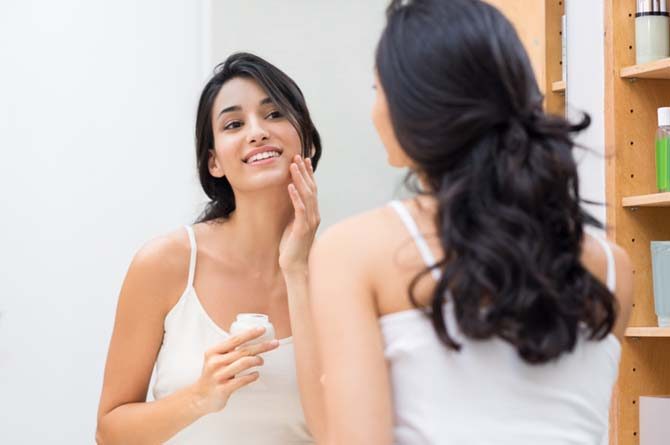
Applying a gentle, natural moisturizer to your skin after shaving can also go a long way towards preventing razor bumps. The skin simply needs moisture to allow the hair to grow back properly (Source).
Avoid Alcohol
Now that you know keeping your skin moisturized is important, you’ve probably also assumed that you want to prevent your skin from drying out. That’s why you should avoid using skin products that contain alcohol.
Although this is a common element in many beauty and skin care products, it can actually have a negative effect in the long run because it dries out the skin. Take a look at the ingredients of any skin care product you use to make sure you’re not exposing your skin to too much alcohol (Source).
Wax Instead
Obviously, not shaving is the most effective way to avoid razor bumps. Unfortunately, most people don’t have that option. It’s one thing to know that shaving will put you at a greater risk of developing razor bumps.
It’s something else entirely to simply accept that this is what you must do to avoid this problem. You’re going to have unwanted hair in certain areas of your body. It may not be acceptable to you to simply leave it there.
Luckily, you don’t have to, even if you decide not to shave as often as you normally would. Scheduling regular waxing appointments can help you remove the hair you don’t want on your body without having to resort to shaving and putting yourself at risk of razor bumps.
Granted, this method may not be cost-effective or practical for everyone, but if it’s in your budget and you have the time for it, it’s definitely an alternative to constantly shaving your unwanted hair (Source).
Apply Aloe Vera
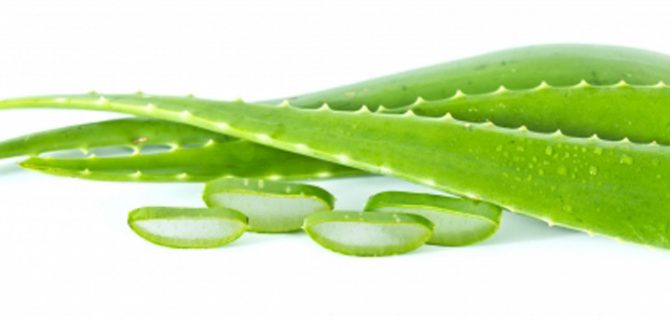
Razor bumps aren’t just unsightly. In some cases, they can be somewhat irritating. This is typically due to inflammation.
Luckily, there are some great natural ingredients you can rely on to reduce any redness or discomfort associated with inflamed razor bumps. Aloe vera gel is one of them.
Aloe vera gel’s anti-inflammatory properties are so well-known that many experts recommend keeping it on hand when spending time out in the sun, as it can be very effective at preventing a sunburn from getting worse.
This same principle applies to your razor bumps. If they’re causing redness or discomfort, simply apply some aloe vera gel to the affected area. It should reduce the inflammation as you wait for the bumps to go away on their own (Source).
Or Use Apple Cider Vinegar
Apple cider vinegar is a natural ingredient that offers major antibacterial benefits and may help in reducing inflammation. That’s why it often plays a role in a wide range of natural remedies. Luckily, one of these remedies involves treating razor bumps.
This is another simple trick to take advantage of. Just dip a cotton ball or cotton swab into some apple cider vinegar, then apply it directly to the affected areas of your skin. Let your skin absorb it; you don’t need to rinse it off unless you apply too much and it won’t dry after several minutes.
Then you might simply want to rinse off the excess for your own comfort. For the best results, repeat this process two to three times a day. Doing so will help your razor bumps heal more quickly by keeping bacteria away. This may also soothe any irritation you’re experiencing as a result of inflammation (Source).
Apply Hot Water
This remedy is another way to keep your razor bumps from getting too noticeably red or inflamed. Simply soak a washcloth in hot water (make sure it’s not so hot that it will cause discomfort) and apply it to your razor bumps when you see them develop.
This step helps to kill off the kind of bacteria that might otherwise cause your razor bumps to get inflamed. This will also help prevent the kind of discomfort that comes from inflamed razor bumps (Source).
Try Not to Pick at Them
Yes, when razor bumps develop, it can be very tempting to pick at them. This is particularly true if they cause irritation. However, it’s not a good idea for the same reason it’s not a good idea to pick at your acne.
Doing so can expose your razor bumps to bacteria. This boosts the odds of them getting inflamed. Instead, pay attention to your habits and resist the urge to pick at your razor bumps when you realize you’re about to (Source).
Don’t Rub Your Bumps
Picking at your razor bumps can expose them to bacteria. Unfortunately, simply rubbing the affected area can also cause inflammation. This will make your razor bumps more noticeable and could potentially impact the speed at which they heal.
Thus, you should also pay attention to your behavior if you have a tendency to rub irritated areas of your skin. Doing so may seem like it helps to reduce the irritation, but in the long run, it’s more likely to have a negative effect (Source).
Avoid Shaving the Affected Area
As you learned earlier, one of the better ways to let razor bumps heal (and prevent more from developing in the future) is to shave less often. However, as was also discussed before, this isn’t always an option for everyone.
In these cases, it’s still a good idea to avoid shaving the affected area as much as possible. While you can still shave other areas of your skin, avoiding your razor bumps will allow them to heal more quickly and easily (Source).
Use a Gentle Aftershave
Applying a gentle aftershave lotion to your skin after you’ve finished shaving can reduce your odds of developing razor bumps by killing off the bacteria that may be responsible for them. Of course, the type of aftershave lotion you apply will depend on the area you’re treating.
For example, if you’re treating the bikini line area, you want to make sure you use a gentle product designed for that area of your skin. Using a product that contains harsh chemicals can result in significant irritation or discomfort (Source).
Try Salicylic Acid or Glycolic Acid
Both of these ingredients are commonly used in skin care routines. That’s because they cause the skin to shed dead cells more quickly than it would on its own. As a result, healthier skin cells can take their place.
This is key to helping get rid of unwanted razor bumps because the skin blocking the follicle or covering the ingrown hair will be replaced with a new layer more quickly. Find these products and follow the instructions on the label to help get rid of razor bumps.
That said, it’s important to keep in mind that applying these ingredients won’t cause your razor bumps to disappear immediately. They will simply speed up the process.
Thus, you shouldn’t assume these ingredients didn’t work simply because they didn’t yield immediate results. It takes time to achieve the results you’re after (Source).
Add More Garlic to Your Diet
Garlic is more than just an ingredient you can use to make a dish more flavorful. Garlic is also well-known for its antibacterial and anti-inflammatory properties.
While you probably shouldn’t apply garlic directly to your razor bumps, you can still take advantage of its healing properties by chewing on a raw clove of garlic in the morning (spit it out and brush your teeth after you’re done chewing) or by simply adding more garlic to your meals. Because garlic is inexpensive, this is a basic and easy step to take that may yield substantial benefits (Source).
Apply Lemon Juice
The acid in lemon juice can be very effective at keeping your follicles free of bacteria. This prevents razor bumps from getting inflamed and becoming noticeably red.
All you have to do for this remedy is apply some lemon juice directly to your razor bumps. Leave it in place for several minutes before rinsing it off.
Some people’s skin is sensitive to lemon juice, so as you repeat this remedy on a daily basis, you’ll start to learn how long you can leave the juice on your skin before it starts to become somewhat uncomfortable (Source).
Or Try Tea Tree Oil
Tea tree oil is another amazing natural ingredient that is well-known for its antibacterial properties. Thus, applying it to your razor bumps can help guard against infection and inflammation.
Follow essentially the same steps listed in the remedy above for the best results, and repeat this process on a daily basis (Source).
Use Lavender Oil
Lavender oil is another essential oil that can be helpful in treating razor bumps. Because lavender has a calming, pleasing scent, many people prefer this option. There is reason to believe its calming effects can also reduce the inflammation associated with razor bumps.
For this remedy, place two ice cubes in a bowl of water, then add about five drops of lavender essential oil. You may want to add up to 10 drops if you’re using a particularly large bowl.
Next, dip a cotton ball into the mixture and apply it directly to your razor bumps. Simply wait for it to dry, and repeat as needed throughout the day (Source).
Consider Using Germicidal Soaps
There is reason to believe that bacteria can contribute to the development of razor bumps. At the very least, bacteria can certainly result in inflammation.
Thus, experts recommend using germicidal soap in the shower instead of a more generic variety. This basic step may help you prevent razor bumps from forming in the first place. Either way, it will definitely help to guard against inflammation (Source).
Create a Skin Mask
This is another way to treat inflamed razor bumps using ingredients you may already have on hand. For this remedy, puree some cucumber using a food processor or similar device, then mix one part pureed cucumber with two parts milk.
You want to mix the ingredients together thoroughly until you have a paste that you could apply to your razor bumps much like a face mask.
Apply the mask to your razor bumps and leave it in place for about 20 minutes, then rinse it off. After doing so, you should notice that the razor bumps are much less red and inflamed than they were before. Repeat as necessary until they go away on their own completely (Source).
Or Use Cornstarch
If you want similar effects to those described above, but you don’t have cucumber and/or milk on hand, you can also apply cornstarch to your razor bumps. All you have to do is leave it in place for 20 minutes, then rinse yourself off thoroughly.
Like the remedy described above, this remedy should help to reduce inflammation, redness, and swelling, making your razor bumps less irritating and less noticeable. This may also promote faster healing (Source).
Exfoliate with Papaya
You already know that exfoliating is important if you want to both prevent and get rid of unwanted razor bumps. However, there are cases in which this may not always be a good idea if the razor bumps have become noticeably infected and/or inflamed. Applying exfoliant products with harsh chemical ingredients to these areas can result in even greater irritation.
That said, this doesn’t mean you shouldn’t exfoliate at all. It simply means you should focus on using natural ingredients as you exfoliate.
You still want to remove dead skin cells to help unclog your follicles and prevent more razor bumps from developing in the future. You just don’t want to do so in a way that actually causes harm instead of helping.
For this remedy, get some raw papaya and mix it with plain yogurt and oatmeal until you have a scrub like substance. Use this as a substitute for chemical based exfoliating scrubs in order to get the benefits that exfoliating offers without any of the unwanted drawbacks (Source).
Or Try a Sugar Scrub
Sugar is another natural ingredient that can exfoliate your skin without exposing it to harsh chemicals that may worsen your irritation instead of eliminating it. Luckily, it’s also the kind of ingredient most people have easy access to.
For this remedy, start by mixing about two tablespoons of sugar with four tablespoons of coconut oil. The goal is to create a mixture that you can easily apply to the affected areas. When you have the right consistency, apply it to your razor bumps and let it rest for about 10 minutes.
After the time has elapsed, simply rinse yourself off gently with warm water. Repeat several times throughout the week. By exfoliating, you’ll remove dead skin cells that could otherwise prevent hairs from growing naturally through the skin.
Additionally, there’s reason to believe that sugar will actually reduce both your irritation and the redness of your razor bumps (Source).
Use Virgin Coconut Oil as a Moisturizer
You’ve already learned that it’s important to apply moisturizer if you want to prevent and heal razor bumps. Moisture helps the skin maintain ideal conditions for allowing the kind of ingrown hairs that cause razor bumps to grow properly.
However, some people prefer to use natural products as moisturizers instead of chemical-based products. If this describes you, consider using virgin coconut oil.
This ingredient also boats antibacterial properties that make it very useful in keeping razor bumps healthy and avoiding inflammation. The fact that it’s relatively easy to find at many grocery stores is practically an added bonus (Source).
Gently Scrub
When you’re in the shower, it can be a good idea to scrub the affected areas of your body with a loofah and a gentle cleanser. While you don’t want to apply too much pressure, being gentle during this process can help hairs that have grown into the skin emerge more easily and naturally.
Adding this step to your shower routine can help you get rid of razor bumps faster than you would if you simply let them go away on their own naturally (Source).
Pay Attention to How Your Lotions Affect Your Skin
Many people apply lotions or similar topical products to their skin after showering and/or shaving. While you certainly don’t need to stop doing this (you’ve already found out that certain products can actually be beneficial after a shower or shave), you should also pay attention to how your skin reacts to these products.
Experts point out that topical lotions that irritate the skin are also more likely to exacerbate razor bumps. To avoid inflammation, be mindful of the way in which your skin reacts to any products you use on it. If they seem to irritate your skin, consider replacing them with gentler substitutes (Source).
Soothe Irritation with Baby Powder
Although baby powder was designed to soothe the kinds of rashes that develop on, well, babies (hence the name), it can actually be effective at reducing irritation in adults as well. Applying it to your razor bumps and waiting about 15 minutes before rinsing it off is a simple way to reduce your discomfort as you wait for razor bumps to heal.
This is the kind of remedy you can use whenever you need to address irritation throughout the day. Thus, you don’t need to follow any set schedule for applying baby powder to your razor bumps. Simply do so whenever you have the time and feel the need to alleviate some of the irritation associated with them (Source).
Apply Hydrocortisone Cream
Razor bumps typically heal faster when they are no longer inflamed. On top of that, they’re simply less noticeable when inflammation has gone down.
By reducing inflammation, you can reduce the redness of razor bumps, making them less easy to spot. This may be an ideal goal for someone who is worried about how razor bumps will impact their appearance in a bikini.
This is why many of the tips here involved using remedies that are designed specifically to limit inflammation. One product you can use in this capacity is hydrocortisone cream.
By applying it to your razor bumps on a daily basis, you’ll see they’ll typically become less red (and therefore less visible) over the course of a few days.
Because hydrocortisone cream is a relatively affordable item that’s also usually easy to find, you should incorporate it into your regimen for managing razor bumps (Source).
Use Witch Hazel
Witch hazel is another natural ingredient that offers many benefits to your skin. It boasts astringent properties, and may help your skin retain moisture. That’s why it can be helpful at treating razor bumps and speeding up the healing process.
For this remedy, simply dip a cotton swab into some witch hazel and apply it directly to your razor bumps. All you have to do is allow it to dry on its own. For the best results, try to repeat this process two to three times on a daily basis. It should eventually cause your razor bumps to diminish sooner rather than later (Source).
See a Dermatologist if Your Bumps Won’t Go Away
The remedies here can be very helpful at preventing razor bumps and speeding up the healing process. That said, even if you didn’t take any extra steps, razor bumps typically go away on their own over time.
Of course, there are always exceptions. That’s why you should never rule out medical treatment. The information in this article is valuable, but it should never be mistaken for professional medical advice. An underlying skin issue may be the reason your razor bumps won’t seem to heal no matter how long you wait. If yours won’t heal over time, schedule an appointment with a dermatologist. They’ll evaluate your condition and determine the best treatment option for your needs. There are certain medical and cosmetic procedures they can perform which can help you get rid of your razor bumps much more effectively.
Luckily, that’s typically not necessary for most average people. Yes, razor bumps can be very annoying and frustrating. You put in effort to groom yourself and maintain your appearance. No one enjoys seeing their efforts thwarted because some pesky hairs ended up growing back under the skin instead of straight out of it like they’re supposed to.
Again, that doesn’t mean this is simply the kind of problem you have to accept as unavoidable. The information provided here will help you avoid razor bumps much more consistently than you may have in the past. And, if they ever do form, you can use many of the remedies described above to get rid of them sooner rather than later.


